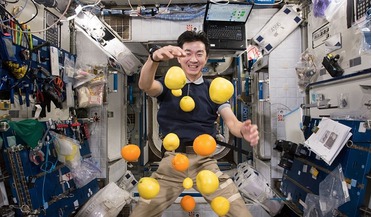 October 2015
Baikonur, Kibo and beyond: Japan’s leading role in space
October 2015
Baikonur, Kibo and beyond: Japan’s leading role in space
... on its space odyssey - in late July, it successfully conducted orbit adjustment in an attempt to place it in orbit around Venus. In addition, a Mercury probe project is underway. This is in collaboration with our ESA colleagues. And then there’s the...
 February 2016
Is Jupiter Really Our Protective Shield?
February 2016
Is Jupiter Really Our Protective Shield?
..., and removed much of Earth’s CO2-rich atmosphere in the process, our planet would likely be more like Venus with surface temperatures unable to support liquid water or life. While the Giant Impact model is being challenged...
 March 2016
Rosetta – Starting from Scratch
March 2016
Rosetta – Starting from Scratch
.... So he continued his efforts and, also thanks to the approval of further interplanetary missions like Mars Express and Venus Express, he managed to build a network of three deep space antennas: after New Norcia, came Cebreros in Spain which...
 July 2016
France, Europe and Russia - two decades of space launch cooperation
July 2016
France, Europe and Russia - two decades of space launch cooperation
... 2003, before the Fregat stage re-lighted to inject the probe on a transfer orbit to Mars. In November 2005, ESA’s Venus Express mission was likewise smoothly launched aboard a Soyuz-Fregat vehicle. Each partner has found its...
 August 2016
Polish Space Agency pursues task of developing country’s space expertise
August 2016
Polish Space Agency pursues task of developing country’s space expertise
...-built equipment included in almost every flagship research mission by ESA (Cassini-Huygens, Integral, Mars Express, Rosetta, Venus Express and Herschel). POLSA must also create conditions for Poland’s space policy to serve society and...
 August 2016
Rosetta overcomes major setback
August 2016
Rosetta overcomes major setback
... 2004. After the initial critical phases, Andrea Accomazzo also left the team to take care of the Venus Express mission preparation. He remained though in the interplanteary division, in the same corridor and working on a spacecraft very...